This was the decade that open worlds finally opened up
Looking back on ten years of open world games.
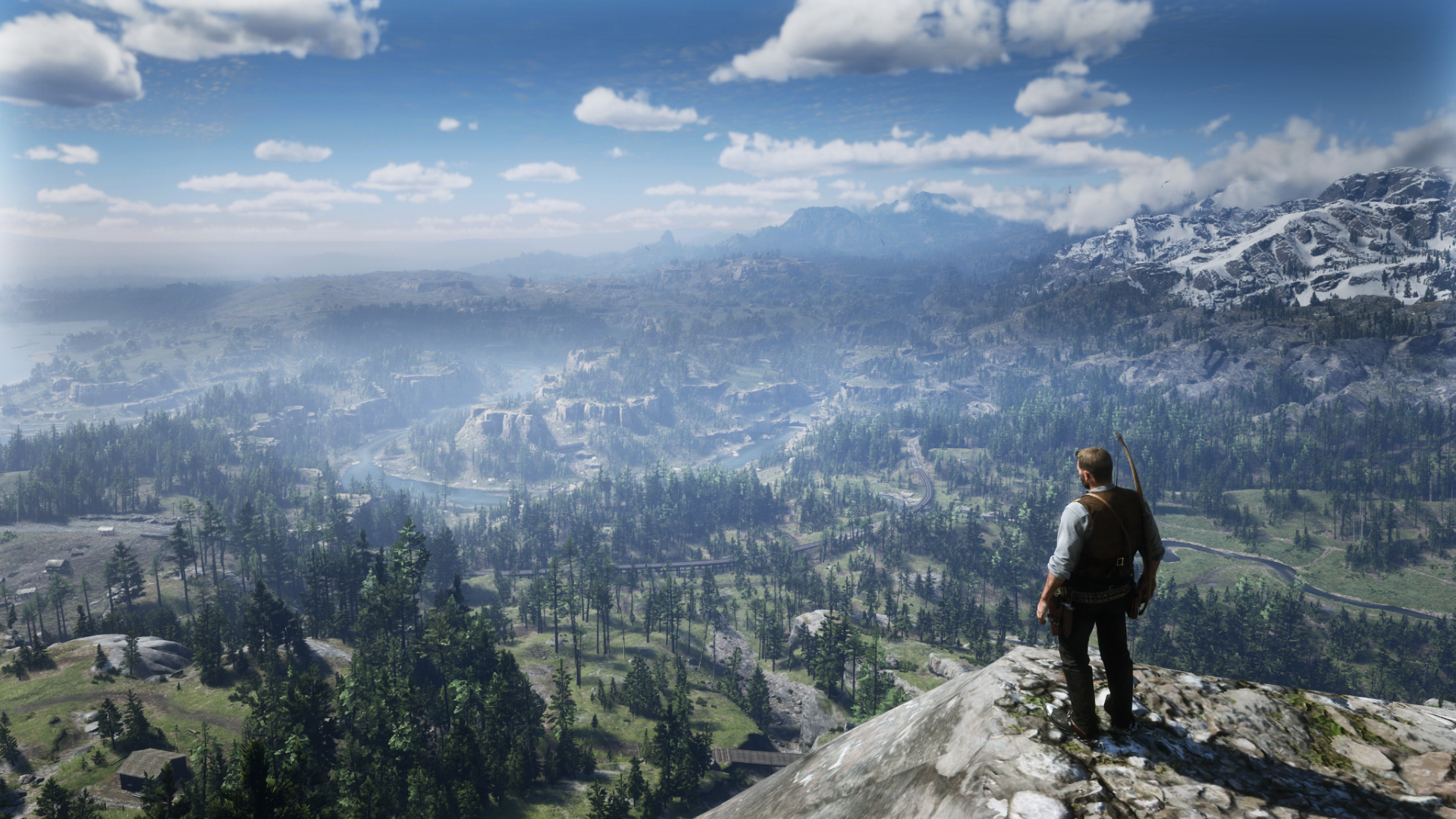
The open world genre has evolved massively over the last decade. In some ways it has evolved and grown; in others it hasn't changed much at all since Rockstar's standard-setting Grand Theft Auto III. The history of open worlds is long and storied, going back decades on PC. But recently, thanks to advances in technology and an increased appetite for these games, developers have taken things to exciting new heights. Here are some of the highlights.
2009: Renaissance man
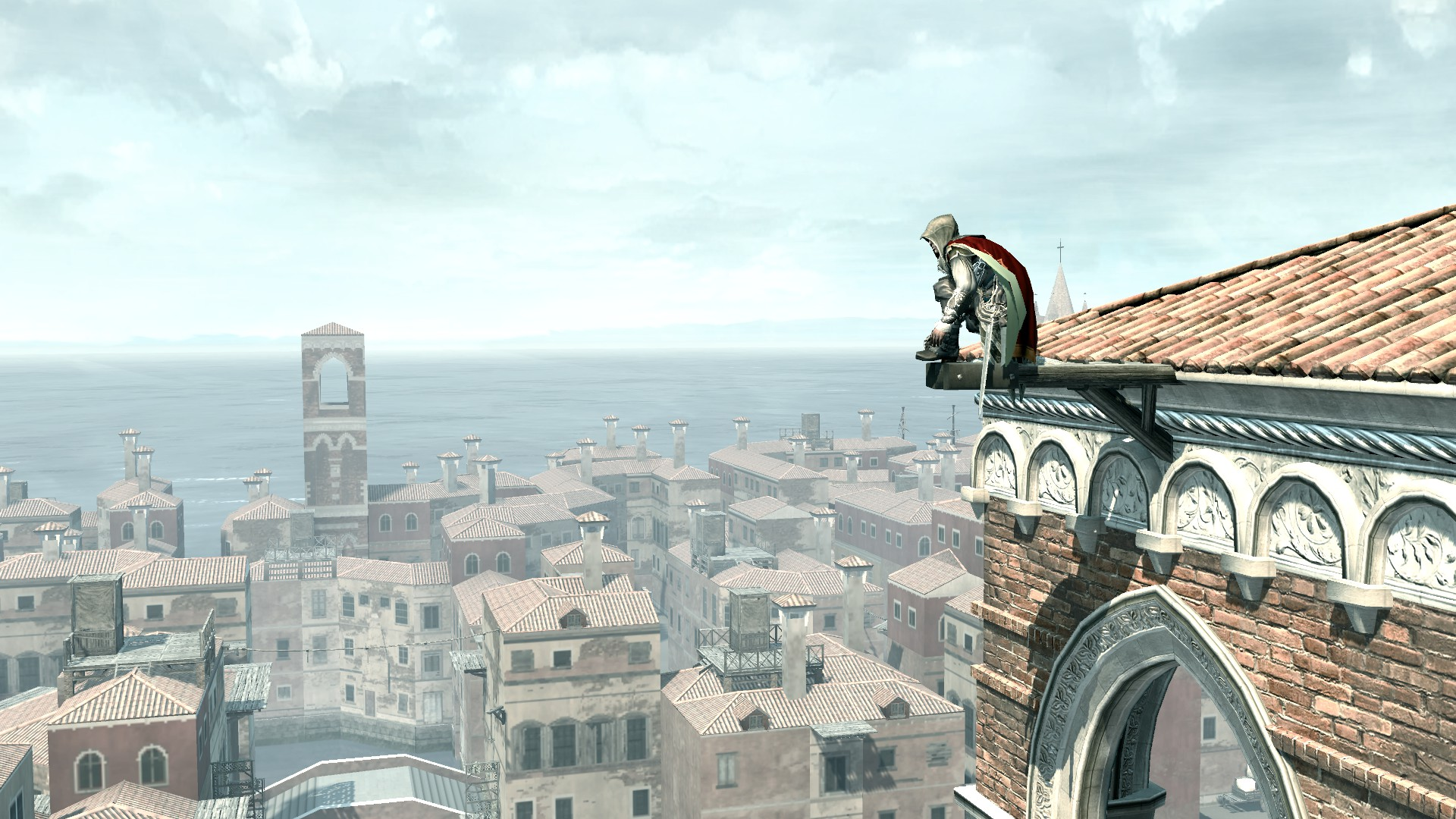
After the wild success of Grand Theft Auto IV in 2008, people were ravenous for more open worlds at the beginning of the decade—and Assassin's Creed II was a fine way to kick things off. The game transports you to 15th Century Italy, taking you from the grand city of Florence to the canals of Venice. Not only is it a perfect sequel, improving on everything the original didn't get right, but its painstaking, bustling recreation of the Renaissance period, in all its architectural splendour, is richly detailed and hugely atmospheric.
Tedious optional missions like collecting 100 feathers are an unfortunate hangover from the preceding decade of open world design, but the Assassin's Tombs—optional, self-contained puzzle/platforming challenges—give you a compelling reason to break away from the critical path and explore. However, the most striking thing about this world is the feeling it gives you of existing completely in another place—something Ubisoft would continue to excel at, even in the worst Assassin's Creed games, for the next ten years.
A foul-mouthed Irishman punches his way around Nazi-occupied Paris.
This year also saw developers begin to experiment with the open world formula, breaking away from the mould established by Rockstar in GTA—which was already beginning to feel tired. Double Fine brought an indie sensibility to the genre in the funny-but-flawed Brütal Legend, an action/adventure game set in a world inspired by heavy metal album covers. French studio Asobo released Fuel, a post-apocalyptic off-road racer featuring a vast procedurally generated world that remains, to this day, one of the largest game worlds ever created. Interestingly, Asobo is now working on the next Microsoft Flight Simulator, which will let players fly over a scale replica of the entire world.
Even Electronic Arts was getting experimental with The Saboteur, a World War II game in which a foul-mouthed Irishman punches his way around Nazi-occupied Paris. Nazi districts are rendered in black-and-white, with propaganda, stormtroopers, and dejected citizens filling the streets. But drive them out and the gloom is replaced by colour, neon, music, and can-can dancers. It's one of the weirdest games EA ever threw money at, and proof that it doesn't always play things safe. Just don't expect to see a sequel anytime soon.
2010: Summer in the city
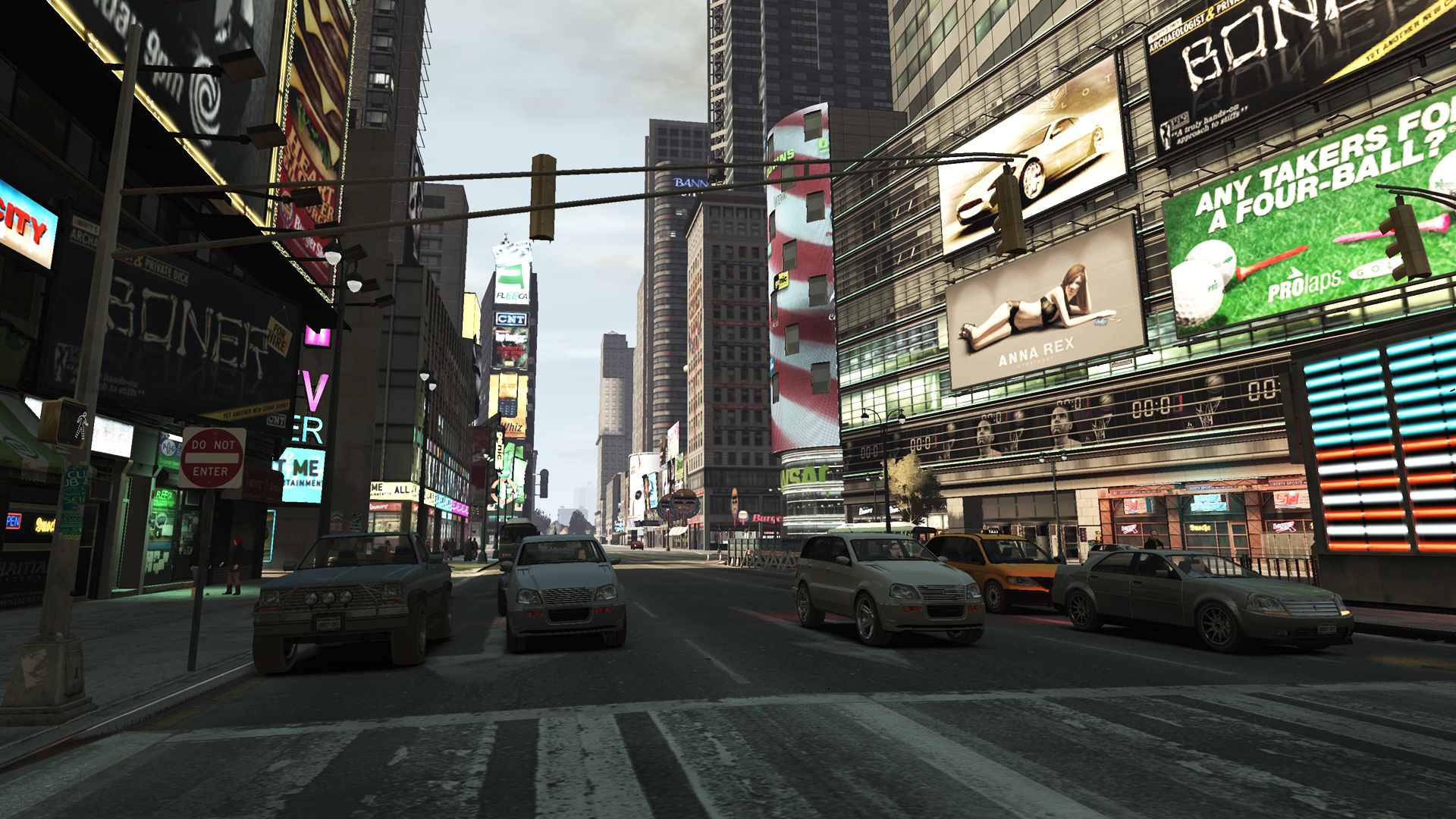
This year saw the PC release of Episodes From Liberty City, which collects both of GTA IV's DLC expansions—The Lost and Damned and The Ballad of Gay Tony—in one standalone package. These are notable not only because they're excellent, and arguably better than the base game in many ways, but because they're an example of an open world setting being reused and recontextualised. Liberty City feels like a whole new place through the eyes of Gay Tony protagonist Luis Fernando Lopez and Lost and Damned's Johnny Klebitz.
In Lost and Damned you see the city from the perspective of a biker gang, their grimy lifestyle reinforced by the addition of a graphics filter that adds a layer of noise to the screen and sucks some of the colour out of it. The Ballad of Gay Tony is the complete opposite, taking you on a journey into the city's vibrant nightlife, with brighter colours and more vivid lighting. This expansion also saw a return to the loud, over-the-top mission design of San Andreas; a response, perhaps, to players who complained that IV's story was too bleak and downbeat. It's remarkable how Rockstar took a city we had already explored to death as Niko Bellic and made it feel brand new again—twice.
The biggest gaming news, reviews and hardware deals
Keep up to date with the most important stories and the best deals, as picked by the PC Gamer team.
It's remarkable how Rockstar took a city we had already explored to death and made it feel brand new again—twice.
In 2010 we also got Dead Rising 2, a sequel fans were initially wary of when they learned that development had changed hands from Capcom's Japan studio to Canadian developer Blue Castle. But Dead Rising 2 revealed itself to be a worthy follow-up, taking the action to Las Vegas-alike Fortune City. This was an early example of an open world that was much smaller than its peers, but that made up for it with an impressive density of detail. The number of ways to comically murder zombies, and volume of items that could be combined to create outlandish weapons, made for a fun and compelling open world—even if it was a fraction of the size of Liberty City.
One of the most divisive open world games of 2010 was Mafia II, developed by 2K Czech. Empire City, a stunningly beautiful amalgam of Chicago and New York, was ultimately just a detailed backdrop for a series of linear missions; something reviewers complained about, citing a lack of things to do outside of the story. But in terms of world-building and creating a sense of place, Empire City was, and still is, a triumph—particularly the shift from the snowy 1940s version of the city to the sunny, optimistic '50s. Presenting one large city across two time periods was wildly ambitious, but 2K Czech nailed it—at the expense of filling the place with the usual open world distractions.
2011: Winter is coming
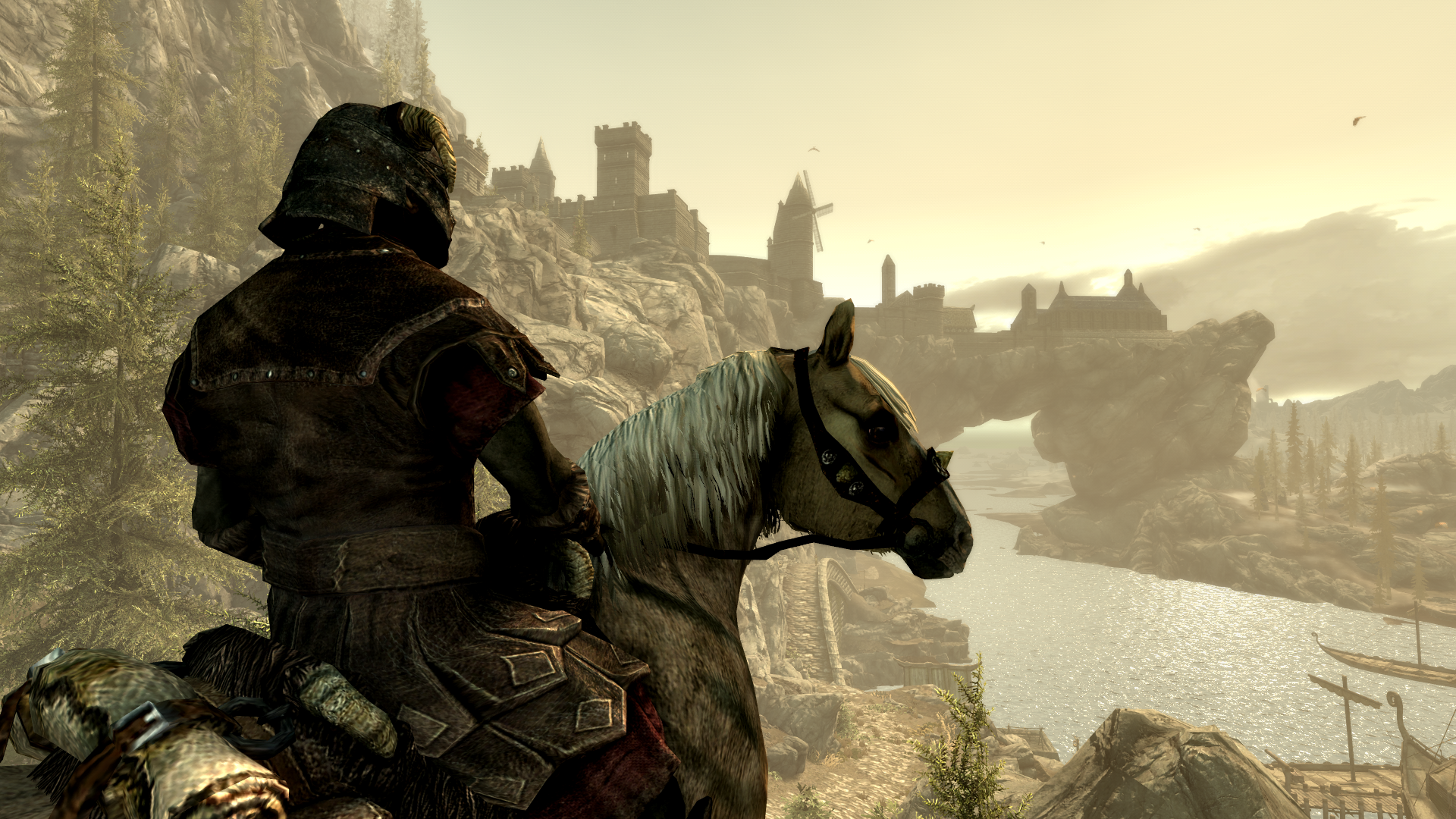
Bethesda's knack for developing open world games was well established by this point, whether it was Fallout 3, Oblivion, or the impossibly huge Daggerfall. But it was Skyrim, the fourth main Elder Scrolls game, that really captured people's imaginations. This frosty landscape is impressively varied, containing blizzard-battered peaks, bubbling hot springs, autumnal forests, and swampy marshes. In hindsight, it's only a so-so RPG, with repetitive dungeons, bland dialogue, and janky AI. But as a world to escape into, Skyrim is a remarkable thing. It's especially good at evoking the feeling that this is an ancient, storied place, rich with history and culture.
Skyrim, and every Bethesda RPG for that matter, is at its best when you decide to ignore whichever part of the story you're being nudged towards and explore. The studio is great at making worlds where, if you just pick a direction and walk, you're bound to run into something interesting: whether it's something hand-crafted or a random run-in with a weirdo, a hungry animal, or some mages looking for a fight. Skyrim has aged quite a bit in purely technical terms, but when the lighting is just right, or that colourful aurora is glittering in the night sky, it still has the power to stop you in your tracks.
When the lighting is just right, it still has the power to stop you in your tracks.
One of the most impressive feats of open world design this year, in terms of pure artistry, was Rockstar and Team Bondi's L.A. Noire. Again, like Mafia II, its chunk of 1940s Los Angeles is more of a backdrop to a traditionally linear game than a place meant to be thoroughly explored, or to cause mischief in. But as an example of capturing a moment in time, and allowing a player to explore that history first-hand, L.A. Noire is really stunning—the result of painstaking research (and, no doubt, a lot of late nights) from people who were clearly in love with that time period. It's one of the greatest examples of videogames as time travel, and a fine detective game to boot—even if it wasn't as revolutionary as its now-defunct developer claimed it would be.
And, of course, the influence of Dark Souls cannot be understated, even if it isn't exactly an open world game as we've come to understand it. FromSoftware's evocative, interconnected world is a masterclass in atmosphere and world-building. From the understated restraint of its storytelling to the multiple ways players can navigate its world, fragments of Dark Souls have appeared in countless games since—subtly and not-so-subtly.
And who could forget Driver: San Francisco? This sequel gives Tanner the ability to jump into other people's heads and drive their cars around, like some over-the-top episode of Quantum Leap. Not exactly an all-time classic, but an undeniably imaginative approach to the open world genre.
2012: Eastward bound
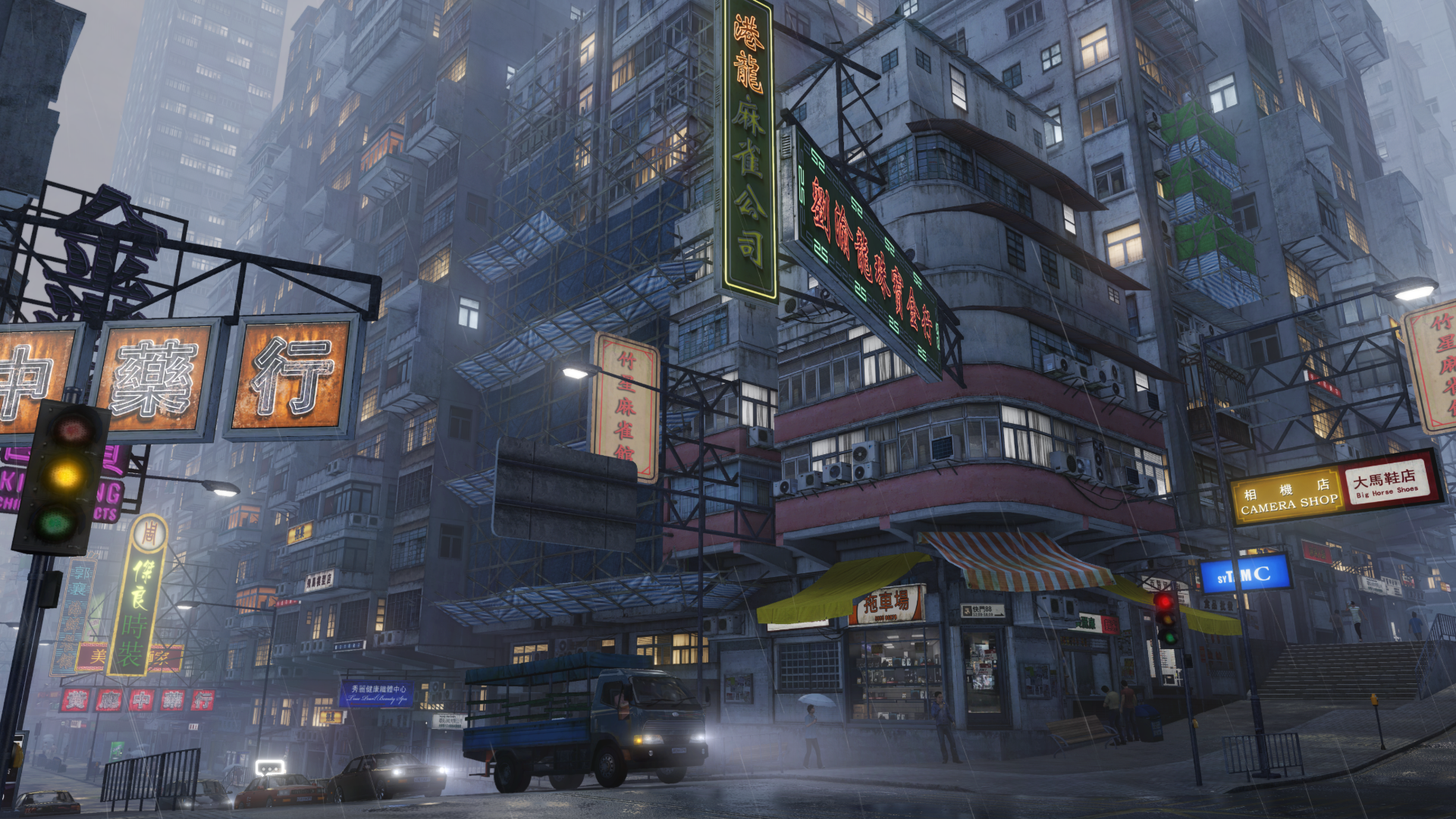
One of 2012's most surprising open world highlights was Forza Horizon. This racing sim takes the slick presentation and weighty controls of Forza, shaves some of the realism off, then sets players free in a large stretch of the state of Colorado. The festival atmosphere, accessible interface, and joyously smooth, responsive handling make for an immensely playable game. And although it was an Xbox 360 exclusive, it laid the groundwork for what has since become a beloved series that can now, happily, be played on PC.
Beginning life as an entry in the long-forgotten True Crime series, a Hong Kong-set open world crime epic was rescued from development hell by Square Enix, renamed Sleeping Dogs, and released in 2012. In terms of visual fidelity the game lags behind the likes of Grand Theft Auto IV, but makes up for it with a vivid, dramatic depiction of Hong Kong. After exploring countless American cities in open world games, it was a delight to spend time in another corner of the world. This place felt new and exotic, bolstered by an excellent soundtrack, likeable characters, and a sense of humour. It also starred future Oscar winner Emma Stone. Clearly one of her career highlights.
Far Cry 3 was everything the grim, punishing previous game wasn't.
United Front's game features fun missions, crunchy martial arts combat, and a tense, thrilling story involving a young cop working undercover with the Triads. The dichotomy of being a cop and a criminal felt excitingly new for the genre, and the crossover between these two different lifestyles results in some excellent drama in both the story and mission design. Sleeping Dogs isn't a classic, but it is a supremely playable game with a sense of fun that many dry, self-serious open world games struggled, and still struggle, to match.
And then there was Far Cry 3, which was everything the grim, punishing previous game wasn't, being vibrant, accessible, and colourful. Its tropical island setting is a delight to cause chaos in, even if the heavily scripted story missions pale in comparison to the freeform, emergent joy of taking over those heavily-guarded jungle outposts. So successful was Far Cry 3 that Ubisoft would recycle its feel, design, and structure across several sequels, changing the setting and introducing new systems, but basically repeating the same tricks. Which was fine, mostly, but perhaps peaked with the tired, frostily-received Far Cry 5. It's probably time for another reboot, honestly.
2013: The high seas
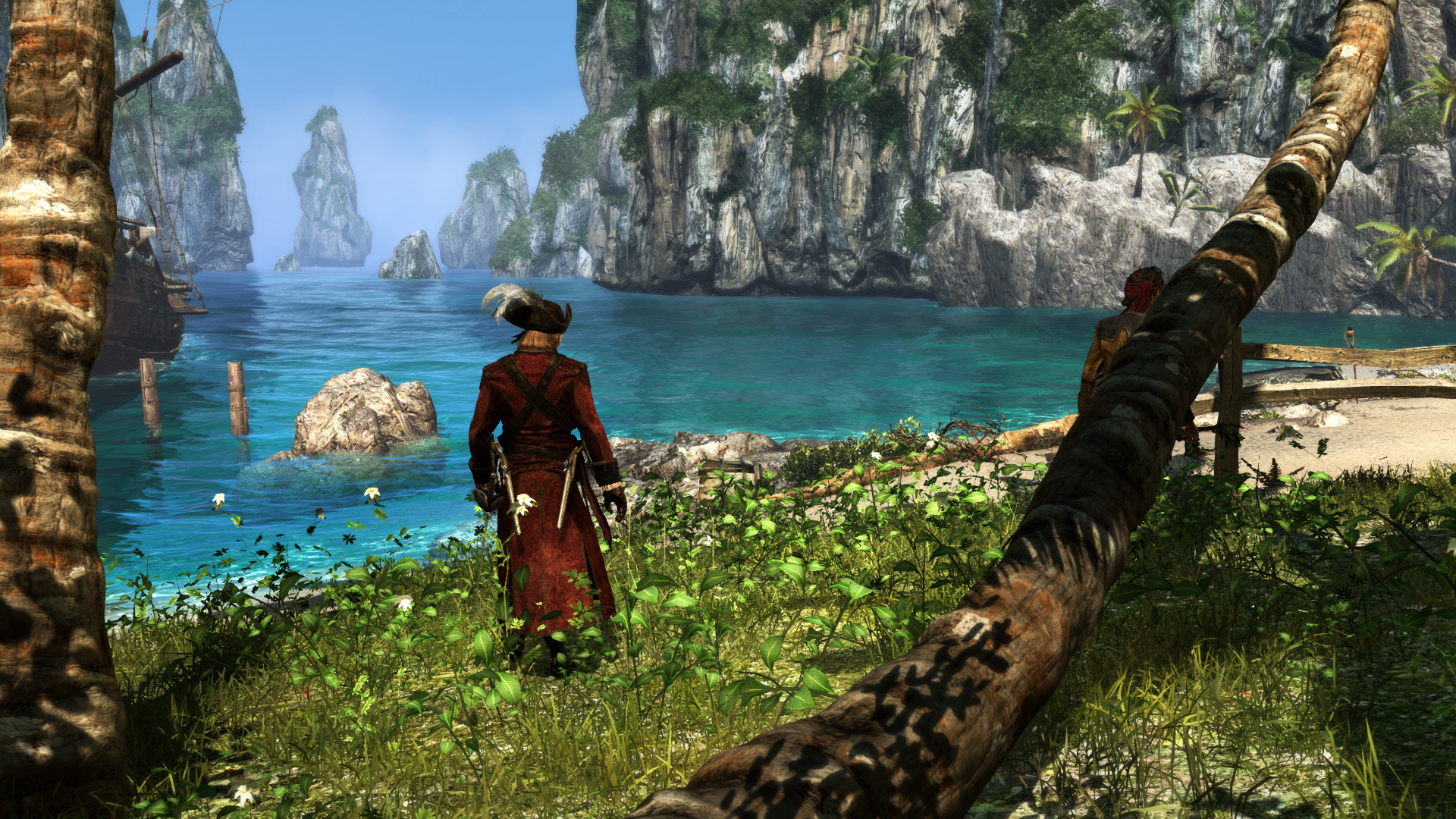
After several Assassin's Creed II spin-offs and the deeply underwhelming third game, Ubisoft made its flagship series essential again with the sublime Assassin's Creed IV: Black Flag. Although some of the fundamentals are the same—following people around busy cities, stabbing Templars with a hidden blade, climbing tall buildings—Black Flag spices things up by also being a tactile pirate simulator. As lively hero Edward Kenway you can sail around a sizeable chunk of the Caribbean, exploring, hunting for treasure, and plundering other ships. The freedom is exhilarating and this was, and arguably still is, the best the up-and-down Assassin's Creed series has ever been. And it achieved this by basically being a pirate game first and foremost, with some Assassin's Creed elements thrown in.
2013 also saw the Saints Row series grow from a slightly crappy Grand Theft Auto wannabe to a sensation in its own right. Saints Row IV is dumb as a rock but its anarchic spirit and weapons-grade self-awareness makes it hard not to love. While Rockstar games are always tethered to some kind of reality, or at least narrative consistency, Saints Row purposely pushes things to the edge of believability, which makes it one of the most purely fun open worlds The downside of this is that it's like junk food; an instant, endorphin-pumping hit that's fun in the moment, but can outstay its welcome. There is something endearing about how Volition's series is completely unpretentious, which is evident in every outlandish frame of Saints Row IV.
An instant, endorphin-pumping hit that's fun in the moment, but can outstay its welcome.
ARMA 3 was also ready for action in 2013, and although calling Bohemia's hardcore milsim an 'open world game' seems a bit reductive, the Greek islands of Altis and Stratis definitely fit the description. These immense pockets of land in the middle of the sparklingly blue Aegean Sea were not only home to a dramatic singleplayer campaign, but countless multiplayer battles and mods—and still are today. The sheer scale of these islands makes them ideal for the bullet-precise realism of ARMA's simulation, and they are occasionally very pretty, despite the functional visuals. These games are evidence that open worlds can be about more than parkour and arbitrary collectables.
Far Cry 3 spin-off Blood Dragon was released in 2013, featuring a small, self-contained open world with a garish neon aesthetic inspired by the not-entirely-accurate modern idea of what the 1980s were like. Dead Rising 3 arrived and spectacularly failed to live up to the previous two games, with a grimy, sepia-tinged visual style that was entirely at odds with the cartoon zombie-slaying. And then there was Grand Theft Auto V, in which Rockstar raised the bar once again—but I'll talk about that later, because the PC version wasn't released until 2015 and featured a number of improvements, visual and otherwise, that went far beyond this first PlayStation 3/Xbox 360 release.
2014: Grudge match
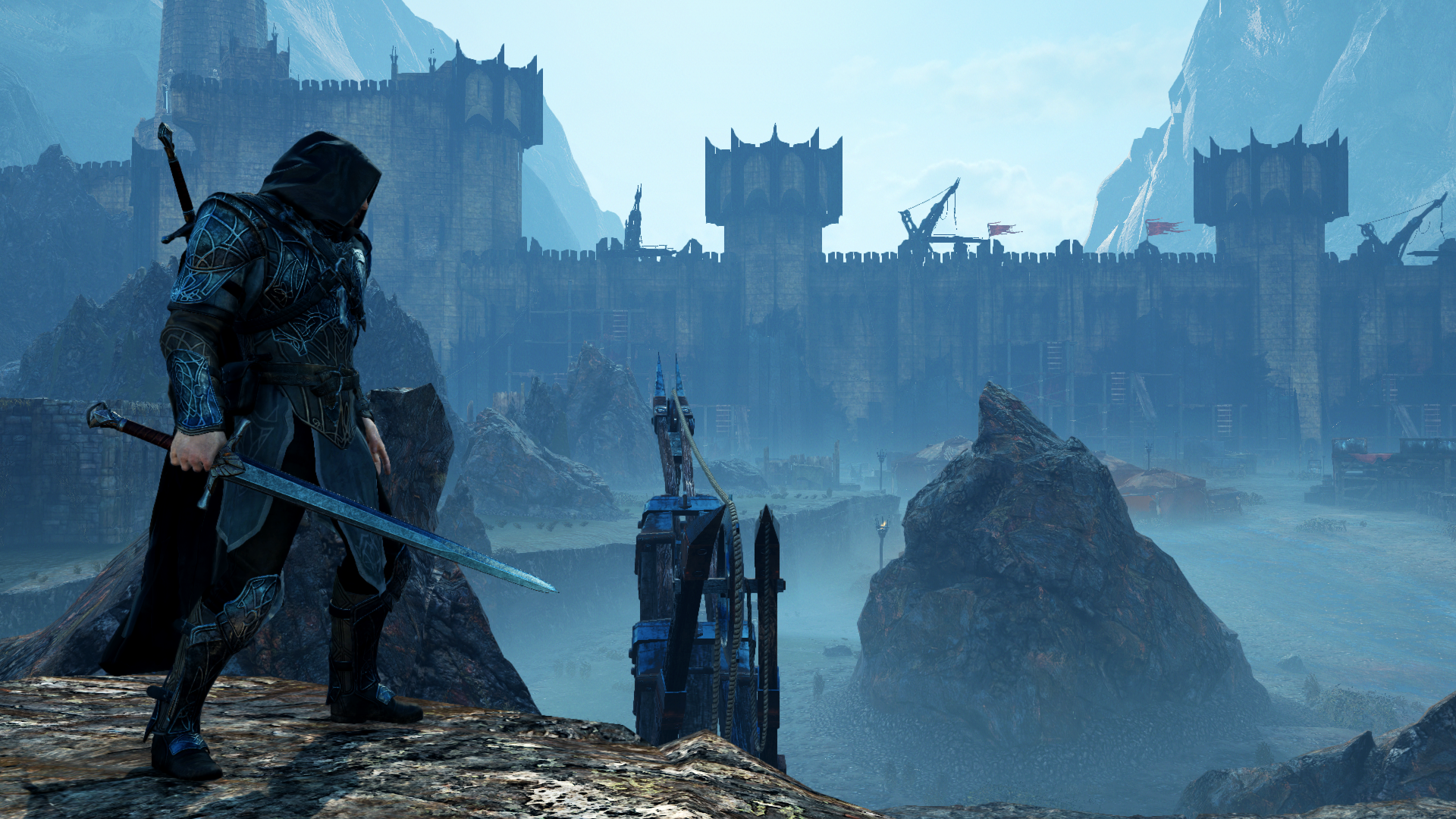
By now open world games were bigger and more complex than ever, but it was a genre that never really had any real standout gimmicks: at least until Middle-earth: Shadow of Mordor came along. This Lord of the Rings open world adventure features the brilliantly unique Nemesis system, in which enemies will actually hold a grudge against you—sometimes lasting for tens of hours. Vanquished foes will return, angrier and stronger, and you find yourself developing genuinely bitter rivalries with these virtual orcs. The rest of the game didn't quite stack up, with Mordor feeling rather empty and uninspiring. But the genius Nemesis system made the game worth playing, despite its numerous shortcomings. The power of a good idea.
Ubisoft attempted to mix its open world formula up with Watch Dogs, a Chicago-set game where you can hack into various elements of the world and change its behaviour—causing a pile-up by messing with traffic lights, for example. It's a neat concept, marred by a dreary world and protagonist, and some quite bland, frustrating mission design. Nevertheless, this would eventually lead to the superb Watch Dogs 2 (more on that later), so it was a worthy experiment. Ubisoft also released Far Cry 4 in 2014, which was very similar to the previous game but set among the snowy peaks of the Himalayas.
You find yourself developing genuinely bitter rivalries with these virtual orcs.
Obsidian released South Park: The Stick of Truth in 2014, a disarmingly great RPG that lets you freely explore a note-perfect digital rendition of the town of South Park itself. The game captures the scrappy animation style of the show perfectly, and being able to wander those streets, dipping in and out of familiar locations, was a joy. Especially when every corner of the thing was stuffed with secrets, jokes, and callbacks to the series. Two-dimensional open worlds are a rarity on PC, which is a shame, because they can be just as compelling.
Microsoft released another Forza Horizon, this time set in France and Italy. Not to be beaten, Ubisoft (it was busy this year) released The Crew, a cross-country racer set in a massive, truncated approximation of the United States of America. Driving seamlessly from the East Coast to West is undeniably impressive, but The Crew's vehicle handling struggles to match the hard-to-define pleasure of the driving in Horizon. Still, the fact that this was even possible—even at a severely reduced scale—is evidence of just how far open world games had come in terms of what was technologically possible at the time. Overall, 2014 was something of a fallow year for open world games. However, looking back, you could call it the calm before the storm.
2015: The next level
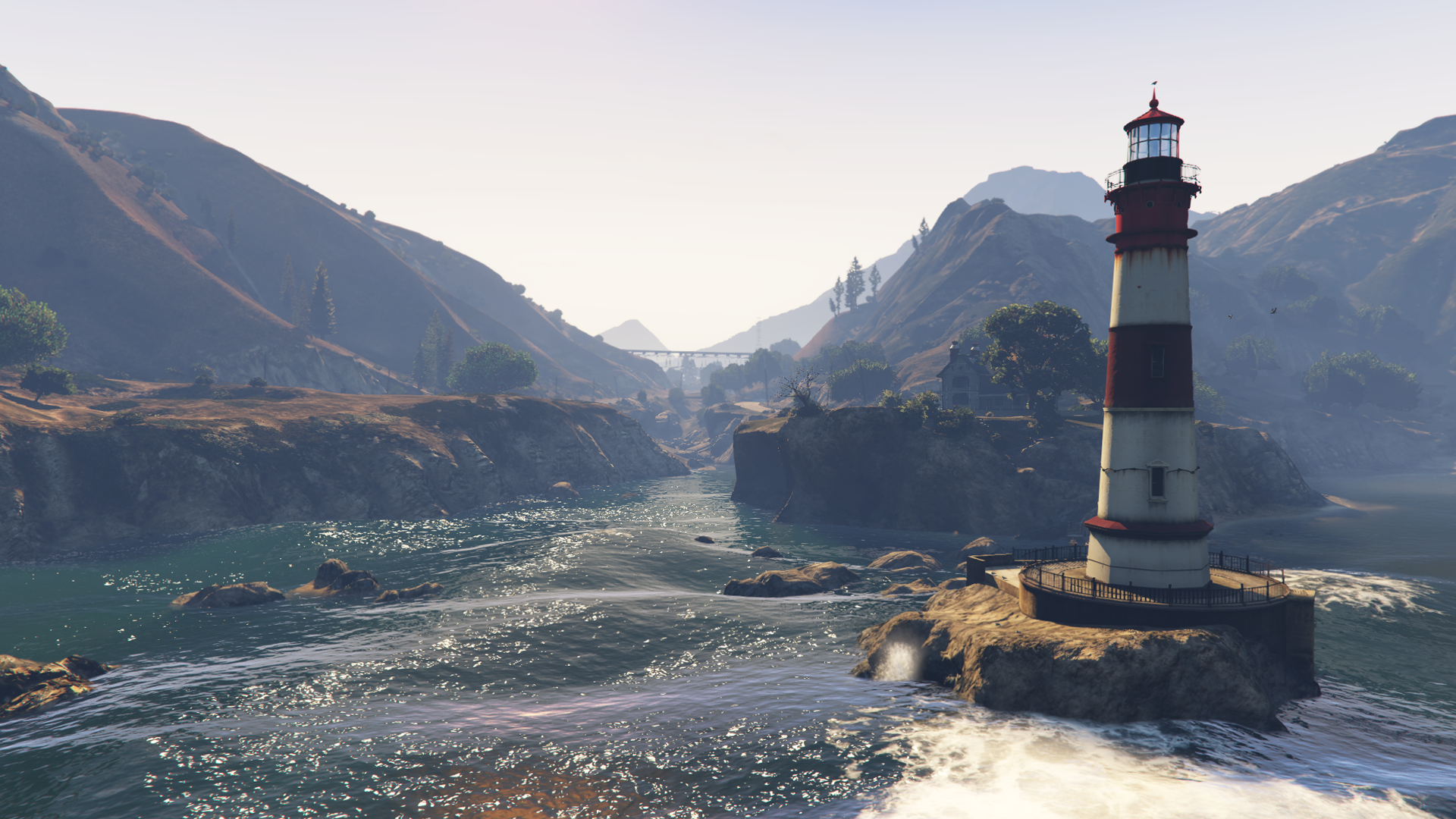
This year, Grand Theft Auto V was finally released on PC, and Rockstar once again showed everyone who's boss. The city of Los Santos and the surrounding countryside, including the towering Mt. Chiliad, were a massive leap forward in terms of fidelity and density. Obviously having Rockstar's money helps in that regard, but the publisher also has a deep understanding of what makes an open world feel like a place and not just a movie set. The sheer depth of detail in V, from the people on the street to the signage on shop fronts, makes this relatively small world (compared to other games, anyway) feel like a living, thriving sprawl, with hand-crafted detail squeezed into every inch of it.
You could argue that Grand Theft Auto V didn't push things forward in terms of what you actually do in its world. The missions and optional activities were largely the usual Rockstar fare: albeit more polished, fun, and varied than ever. Rockstar also blurred the lines between single and multiplayer in GTA Online, a chaotic MMO-lite that shares a world with the main game, with the same level of detail. Sharing a world this well-realised with other players is a delight, especially when teaming up with friends to pull off one of those multi-stage heists.
A living, thriving sprawl, with hand-crafted detail squeezed into every inch.
Grand Theft Auto V didn't propel the open world genre into some new realm entirely, but masterfully refined it, resulting in one of the most enjoyable games of the decade. And elaborate new GTA Online updates are still being released, which speaks to the quality and breadth of that world. Few others could comfortably hold so much content. GTA V's story was another highlight, particularly the fractured relationship of its three swappable protagonists—another innovation by Rockstar that made for some imaginative, unpredictable missions.
But when it came to telling a story in an open world, The Witcher 3: Wild Hunt was the real star of 2015. Not only is CDPR's sweeping world vast and gorgeous—especially the windswept Skellige isles—but it's also stuffed with incredible writing and meaningful quests. Trivial, frivolous side content has plagued open world games from their earliest days (even the good ones), but in The Witcher 3, every quest—even one picked up from a notice board in some random village—will lead to something surprising, interesting, or weird. That makes exploring this place freakishly compelling, because you know something exciting is waiting for you in every twisting, turning quest.
2016: Beyond the infinite
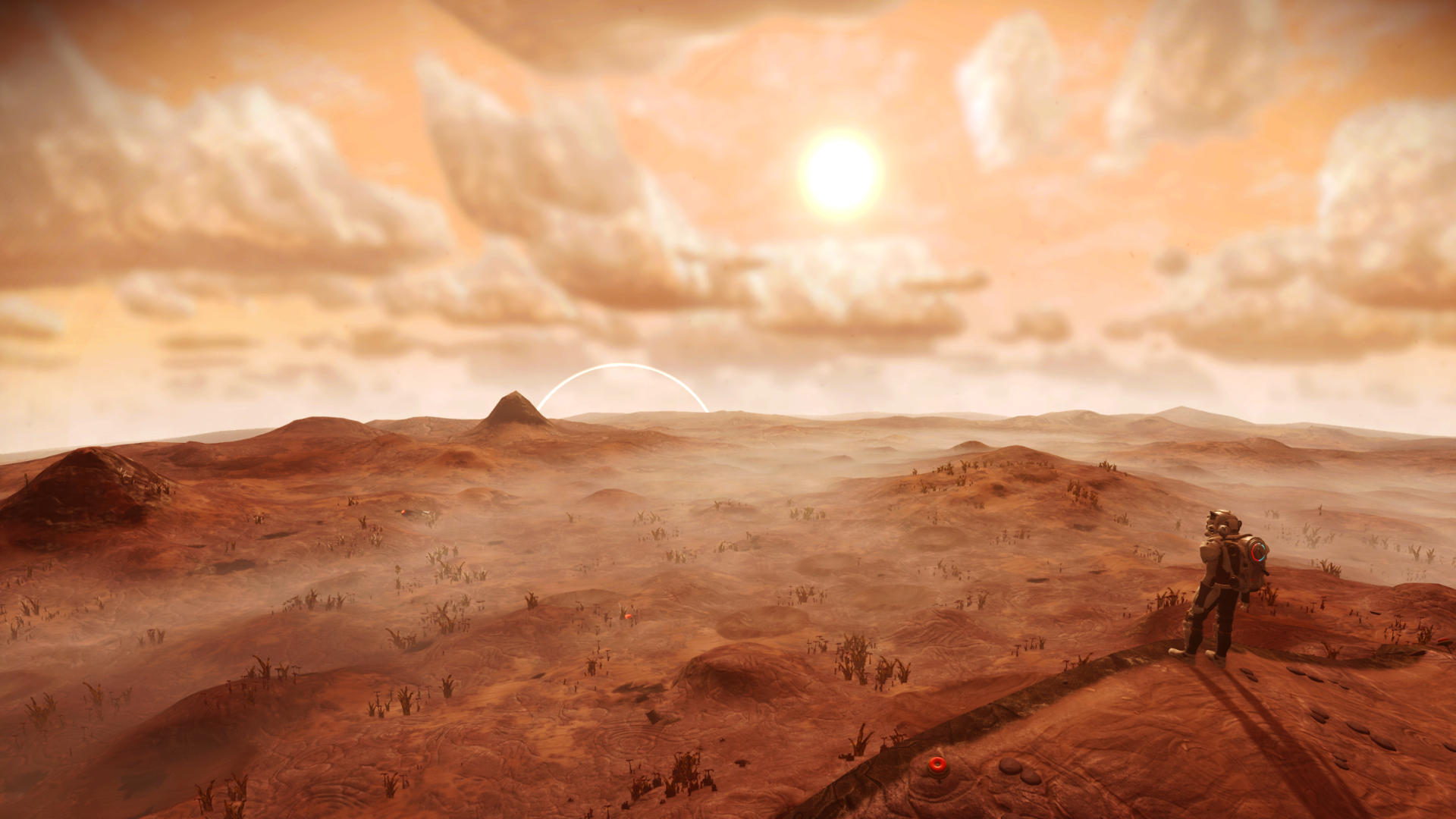
Open world developers have used procedural generation in some capacity for years. Do you really think all the trees in that forest were placed by hand? But impossibly tiny indie studio Hello Games took the idea a step further and used the tech to generate an entire universe: one containing so many planets that not even the designers know what's out there. The launch was rocky to say the least, but even in its janky early days (it's much better now), hopping between worlds and not knowing what was waiting for you beneath the atmosphere was really exciting. Especially when you realised it's highly unlikely that anyone else will see the things you were seeing, due to the sheer number of vivid, colourful galaxies in the game's endless universe.
But it was Watch Dogs 2 that emerged as the open world highlight of 2016. After that dreary original, Ubisoft revealed a game full of life, personality, and colour. Set in a bright, beautiful recreation of the San Francisco Bay Area, this story of hacktivists fighting against a sinister tech company is arguably the publisher's best open world game to date in terms of pure fun. One of the standout features is how other players can invade your game, which results in some brilliantly tense hacking battles as you attempt to reveal their location and drive them out. Watch Dogs 2 is by no means a revolutionary game, but its world is big, interesting, and reactive, with lots of scope to cause mischief and a spree of enjoyable, worthwhile side missions.
Its world is big, interesting, and reactive, with lots of scope to cause mischief.
One of the more unusual open world games released this year was Everybody's Gone to the Rapture, a former PS4 exclusive that arrived rather unexpectedly on PC in 2016. The Chinese Room's sprawling, well-observed slice of the English countryside was a striking contrast with the game's unnerving sci-fi story. The contrast of idyllic rural landscapes and creepy, otherworldly weirdness was really well done, even if the slow, hands-off nature of the game put a lot of people off. Capcom also released Dead Rising 4 in 2016, an attempt to win back lapsed fans that fell flat due to technical problems, a drab world, and the removal of the series' trademark time limit.
So comfortable was Ubisoft with its Far Cry formula by this point that it was able to create a rather bizarre spin-off: the actually-quite-good Far Cry Primal. It was business as usual in terms of minute-to-minute play, but draped in prehistoric furs, and with bows and arrows instead of guns. But as fun as Primal was, the Far Cry 3 model was starting to show its age; and it didn't help that some systems and animations were shared between games. It was hard to shake the feeling that these games were being rolled off a Far Cry production line somewhere deep in Ubisoft HQ. Oh, and this year also saw the long-awaited PC debut of Forza Horizon, whose third game was set in Australia.
2017: Ancient history
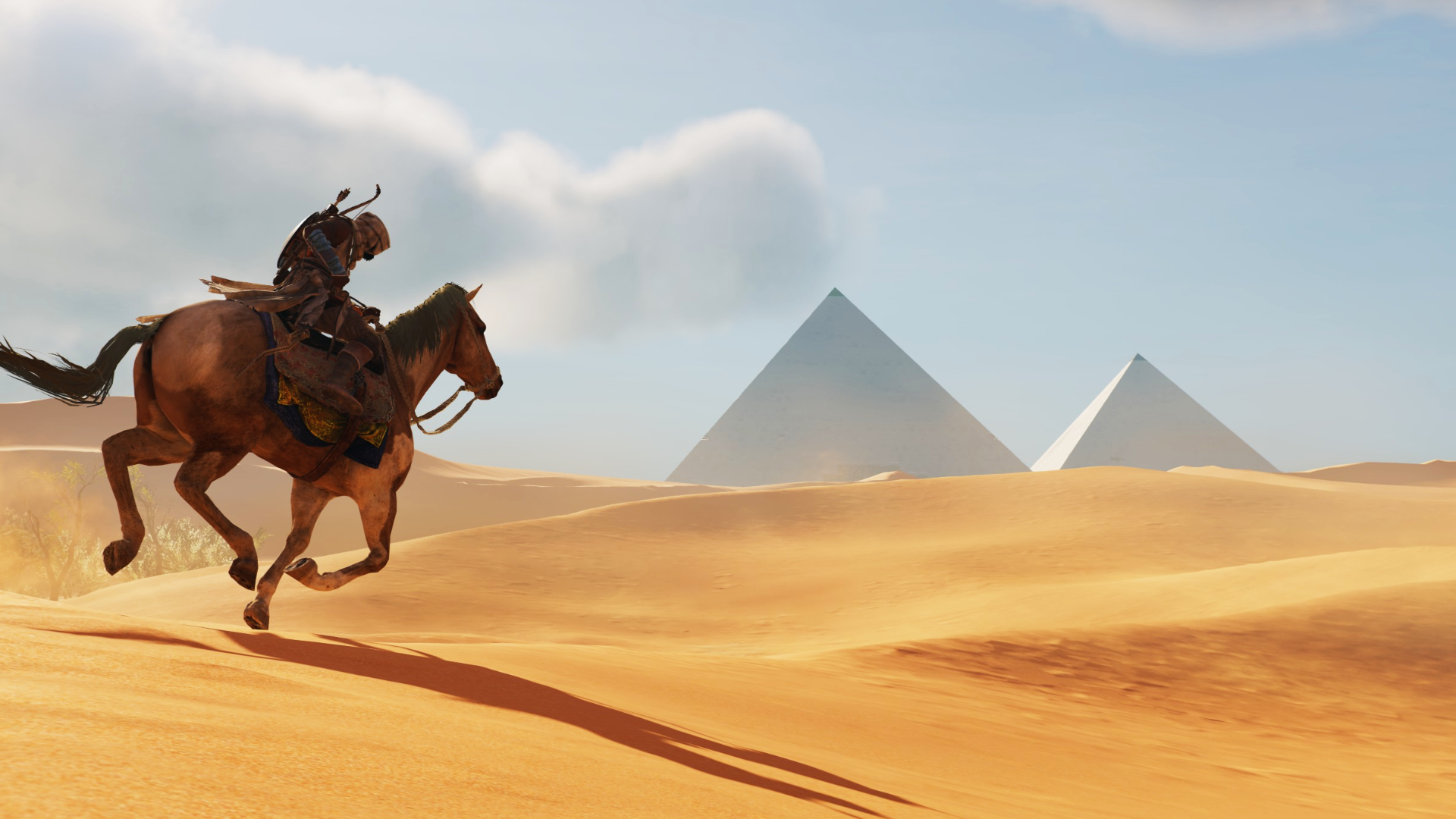
After the disappointing Assassin's Creed Syndicate, Ubisoft decided to halt the series' yearly cycle for the first time in almost a decade. The result was the Egypt-set Assassin's Creed Origins, the most exciting and vital the series had been since Black Flag was released way back in 2013. Origins reminds me a lot of The Witcher 3 (something Ubisoft would double down on in 2018's Odyssey), feeling more like a sprawling open world RPG than previous games. After a series of stiff, joyless Creeds, it was a delight to play something dynamic, vibrant, and exciting, and the Ancient Egyptian setting is beautifully realised, painting a vivid picture of the fall of the Pharaohs.
Prior to this, even the biggest Assassin's Creed worlds felt oddly confined and closed-off, with loading breaks hiding the transitions between locations. But Origins was the first to feel like a genuinely big, connected space, allowing you to ride seamlessly from one corner to the next, in and out of cities, without any interruptions. And it seems likely that this will be how the series is structured going forward, if Odyssey is anything to go by. But despite the dramatic increase in size, Ubisoft lost none of its knack for fine, granular, historically-accurate detail, which Origins is stuffed with: especially the city of Alexandria, which is one of the finest virtual cities the developer has ever built.
Alexandria is one of the finest virtual cities the developer has ever built.
That said, Ubisoft also released something of a dud this year: the underwhelming Ghost Recon Wildlands. While the game's massive slice of Bolivia was beautiful at times, the game contained within was a rigid, unambitious, and repetitive co-op shooter. Monolith also released another Middle-earth open world game, Shadow of War, which greatly expanded on that fantastic Nemesis system, but was again stifled by unimaginative open world design and reams of tedious busywork. The addition of a tiered loot system didn't help, and I soon grew tired of picking up endless items with only minor stat boosts. This series has real potential, but it hasn't quite realised it yet.
On reflection, this was another disappointing year for open world games on PC, with the most interesting stuff happening on other platforms: namely PlayStation 4's post-apocalyptic Horizon: Zero Dawn and critical darling Zelda: Breath of the Wild on the then newly-released Nintendo Switch. Yakuza 0 was another highlight, with detailed chunks of 1980s Osaka and Tokyo to explore, but this wouldn't appear on PC for another year. Our game of the year for 2017, Divinity: Original Sin II, is technically an open world game, although it doesn't sit comfortably alongside the likes of Assassin's Creed. But if you're counting it, it was probably the best open world game of the year.
2018: Getting medieval
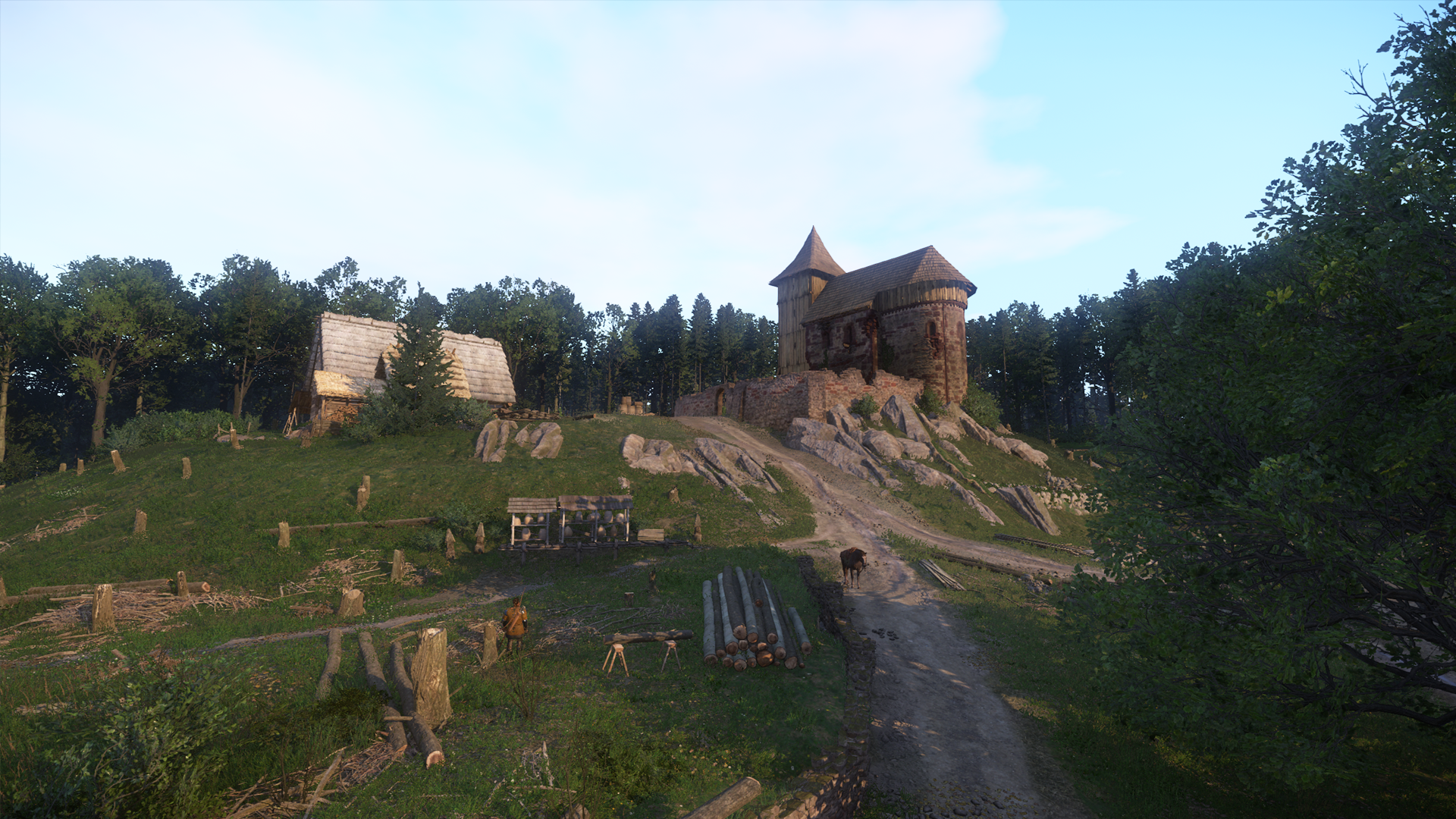
This year saw the release of Kingdom Come: Deliverance, a medieval RPG that trades swords-and-sorcery for grimy realism. Set in medieval Europe, the game has an understated beauty: especially its forests, which are some of the most dense and realistic I've ever seen in a game. But what makes Kingdom Come really great is how everything in this vast expense is governed by simulation, making it thrillingly reactive and dynamic. Get caught stealing and you'll end up in jail; unsheathe your sword during a fist fight and your opponent will back down and maybe even apologise; nobles will look down their noses at you if you're dressed in peasant clothes or haven't had a bath.
There are thousands of these tiny details and interactions, which stack up to create a world that feels functional and alive in a way many others don't. Of course, the downside of this is a lot of bugs. Any game with this level of ambition is always going to suffer from technical issues, and there's a constant feeling that the game is going to suddenly collapse under the weight of its own complexity. I thought Kingdom Come would be the beginning of a new breed of heavily-simulated open worlds, but I've yet to see evidence of this. Kingdom Come is a flawed game in many ways, but the feeling that its world is watching you, waiting to react to everything you do, is quite something.
This is the least Creed-like Creed game yet, and one of the best as a result.
In 2018 we also got another Assassin's Creed game. Odyssey builds on the foundations of Origins, but takes things to another level entirely. This is the least Creed-like Creed game yet, and one of the best as a result, which is quite telling. The world, although still rooted in history, is exaggerated and mythologised to the point where it almost feels like a fantasy setting, with giant statues of the Greek pantheon and grand temples draped in colourful flowers. The structure, quest design, dialogue options, and world traversal are even more heavily influenced by The Witcher 3, and it's fascinating comparing this to Assassin's Creed II at the beginning of the decade. This long-running series has changed dramatically—and it's all the better for it.
Subnautica was another great open world game released in 2018. As much as I enjoyed No Man's Sky, the exploration was often unsatisfying because those randomly-generated planets didn't feel authored or hand-crafted enough to make them worth spending time on. But Subnautica's deep alien ocean is an incredible thing, littered with hand-placed, lovingly crafted details that make every voyage into its depths enormously compelling. It tells a fantastic story too, with some wonderfully dramatic moments—although you can ignore them if you like and just spend your days base-building and surviving among those weird, beautiful, occasionally deadly underwater aliens.
2019: The new frontier

One of the more curious open world releases in 2019 was Avalanche's Generation Zero, a co-op shooter set in rural Sweden in the 1980s. Inspired by the artwork of Simon Stålenhag, the marriage of killer robots and sleepy Swedish towns makes for some interesting visuals. The game is a little too sparse for its own good, but I like how it doesn't use maps or objective markers. If you find a clue to a weapons stash, you actually have to engage with the environment, following clues, to find it. That's something I'd like to see more of in open worlds going forward: following your instincts rather than objective markers. Assassin's Creed Odyssey implements this to some degree, but I'd like developers to take it further.
Shenmue III was a great example of a world that is small, but crammed with detail. Bailu Village, where you spend the first act of the game, is one of my favourite open worlds, despite being very limited in size. As you play, a sense of community develops. You start recognising people. People start recognising you. And with NPCs who follow simple routines, there's something compelling about knowing which characters will be where at certain times of the day. The people who clutter open worlds are usually just faceless robots. Set decoration, essentially. So it's nice to see an open world where the people are individuals, with their own voice, personality, and behaviour.
The game is impossibly dense with detail, which makes it more than just something pretty to look at.
And then there was Red Dead Redemption 2. Predictably, Rockstar's next open world is a step beyond basically every other game, no matter its budget, scale, or scope. The game's expanse of the Wild West is a remarkable feat of world-building; on a grand scale, but also on a granular level. Rockstar's artists have captured the rugged beauty of the natural world on a level no other developer has managed. Its forests, plains, waterfalls, snowy mountains, and swamps are all gorgeous to look at and dripping with atmosphere: helped by some remarkable, absorbing ambient sound design. Playing this on a PC at 4K, you almost feel like you've skipped ahead a generation.
While the story is classic Rockstar—chases, gunfights, robberies, and so on—it's the reactivity of the world that elevates Red Dead Redemption 2 beyond its previous games, including GTA V. Similar to Kingdom Come, there's a sense that this world is quietly observing you, waiting for you to do something so it can react. Return to a town after causing trouble there and the citizens will be wary, warning you to behave yourself; pull a gun and people will get nervous; stray onto someone's private property and they'll warn you to leave, and open fire if you refuse. The game is impossibly dense with these details, which makes it more than just something pretty to look at.
If it’s set in space, Andy will probably write about it. He loves sci-fi, adventure games, taking screenshots, Twin Peaks, weird sims, Alien: Isolation, and anything with a good story.


